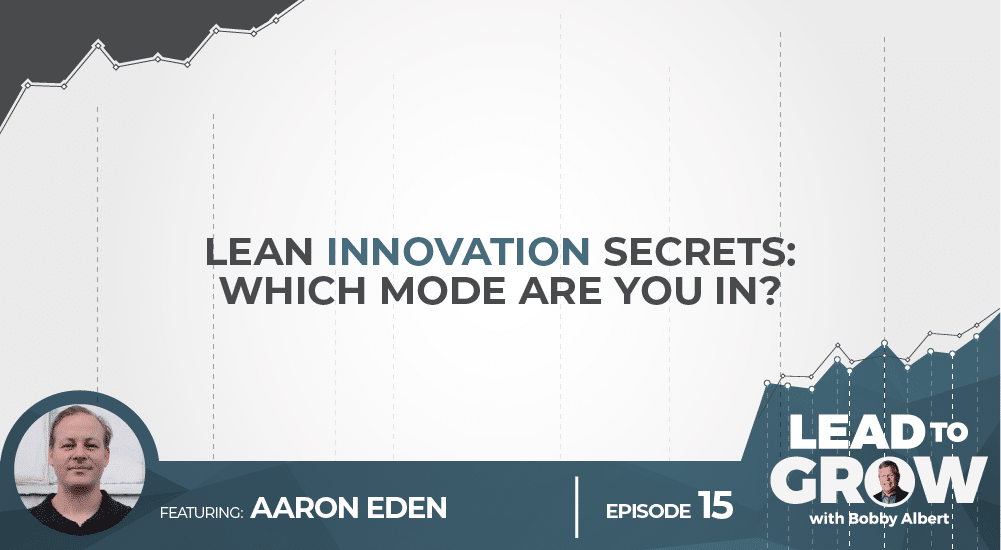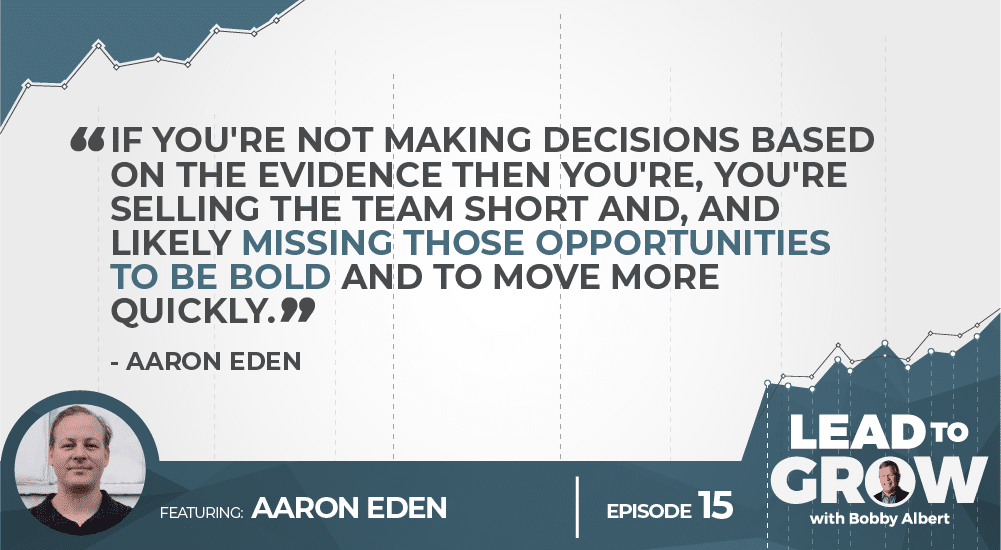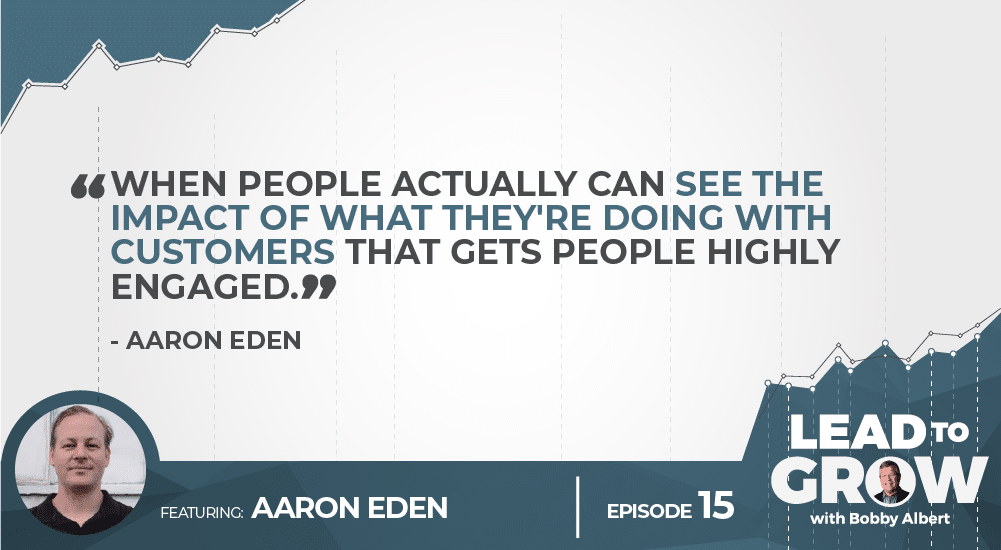Do you want to create more products for your business, but find the development process glacial?
Are you afraid that such an expansion could lead to a disaster?
How do you minimize those risks by designing innovation to be faster and at the same time more customer-centric?
Aaron Eden is Co-Founder and Chief Operating Officer of Moves The Needle. Moves the Needle “ignites entrepreneurial action within large organizations so their people can be closer to customers, move faster and act bolder.”
Human-Centered Design
By using a framework called design thinking (also known as human-centered design thinking) Eden has achieved results.
“You need to empathize deeply with your customers, really understand from an emotional perspective where your customers are coming from and what they need,” says Eden.
This client focus can take longer, but Eden sees how companies can use the insights of lean startups to accelerate the pace of innovation.
“I was seeing entrepreneurs launch new businesses in a weekend and have paying customers immediately, [whereas more traditional companies are saying] ‘wait a minute, what’s wrong here? We’ve got 8,000 people and we can’t get a product out in less than a year.'”
The secret, according to Eden, is using lean startup and agile software development principles to develop innovation faster.
Leaders need three roles: Execution, Exploration, and Expansion
It’s almost like having a computer with three operating systems in it. “You’ve got the execution, exploration, and expansion operating systems.”
Execution
This is the primary role most leaders find themselves in. By definition, a successful company needs to execute well; otherwise they’ll be out of business very quickly.
But execution has its limits. It does very well with fixed outcomes. However, innovation is, by its nature, uncertain.
Exploration
If you have a new idea that you want to explore, experimentation is the name of the game. Using the tools of lean innovation in that exploration context, companies start on a small scale.
The hardest part about leading through expansion is that leaders need a new type of leader model.
“Big, successful organizations have leadership that’s been executing for 20-40 years. So, you don’t want to throw that out,” says Eden. “But in this exploration context, we like to refer to it as mentoring versus managing.”
Mentoring vs. Managing
A good leader in the exploration phase needs to create a safe environment by supporting the team and giving a clear path to try new things, many of which are not going to work.
“In an execution context, failure is bad, right?” asks Eden. “Failure is ‘we tried something at a large scale and we look terrible.’ But on the exploration side, you’re taking really, really small bets. A failure looks like an interaction with five customers who didn’t like the product. As long as the team learned something new from that interaction and applied what they learned, it’s actually a success.”
Eden remembers one of his clients, a large health insurance company, had been developing a project for many months, but they kept learning that their customers didn’t care about the problem or the offered solution. The team bravely told the CEO that they should kill the project.
The CEO held a “public eulogy” for the project where he went over all that they had learned from the process and how they could apply those lessons going forward.
The leader has to set the direction but not the specific path that the team must take. The leader needs to be loose about what form the particular solution will take.
“You’re not specifically saying, here’s how we’re going to solve the problem. But you’re saying, here’s what I want the customers’ world will look like after we’ve solved it.
A famous example of this was Steve Jobs’ development of the iPod. Once the goal of “1,000 songs in your pocket” was set, it was up to the engineering and design teams to come up with the specific path.
A leader must embody three behaviors:
- Inquiry vs. advocacy: A good leader asks the questions, but the team does the work to find the answers themselves. Guide them by zooming out to help them see patterns and insights they might be missing. Stay in mentor mode for as long as possible before putting on the manager hat.
- Set a clear vision focused on the customer: But help teams see the whole system
- Evidence-based decision making: “if you’re not making decisions based on the evidence then you’re selling the team short, and likely missing opportunities to be bold and to move more quickly.”
Expansion
The final stage of innovation is expansion, which marries the experimentation of exploration and the execution phase. Once the new product is set loose with the customers, the leadership team needs to discover the fastest growth path possible.
By taking this approach, you engage both your employees and your customers.
“You’ve now taken individuals that likely feel like a cog inside the giant machine and can’t see the impact of their work, and you’ve given them some level of control over their work. They can see the impact of what they’re doing with customers, and that gets people highly engaged,” says Eden. “I’ve seen that over and over, people get really passionate about solving problems for customers, and they just keep going. It’s powerful.”
This blog post is from a podcast interview with Aaron Eden of Moves The Needle.
Click here to hear this full episode. If you don’t use iTunes, you can also find the full list of episodes by clicking this link.



